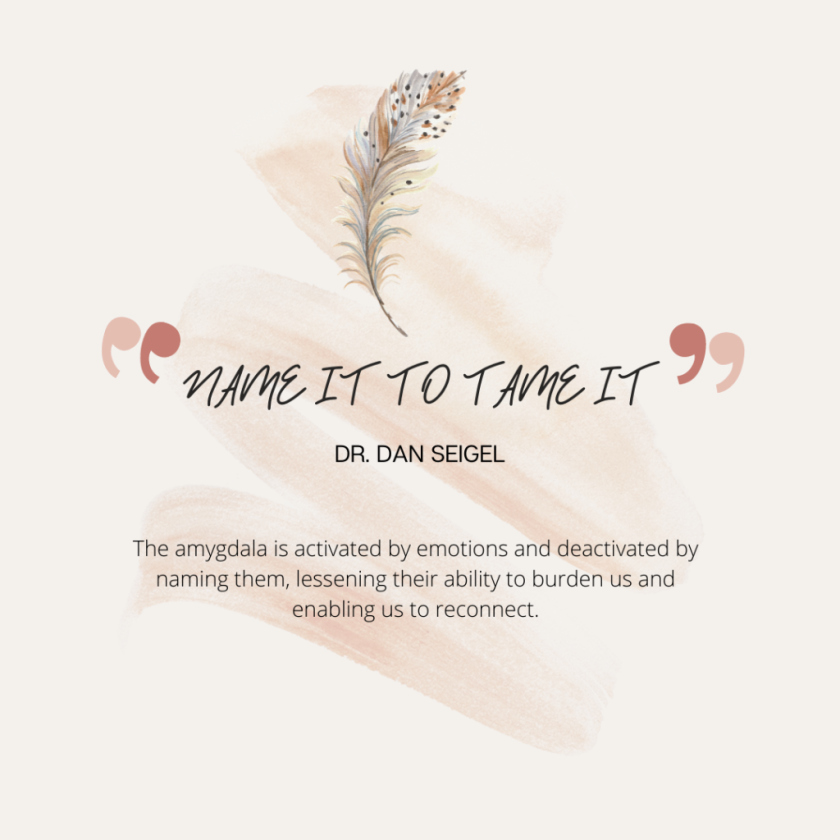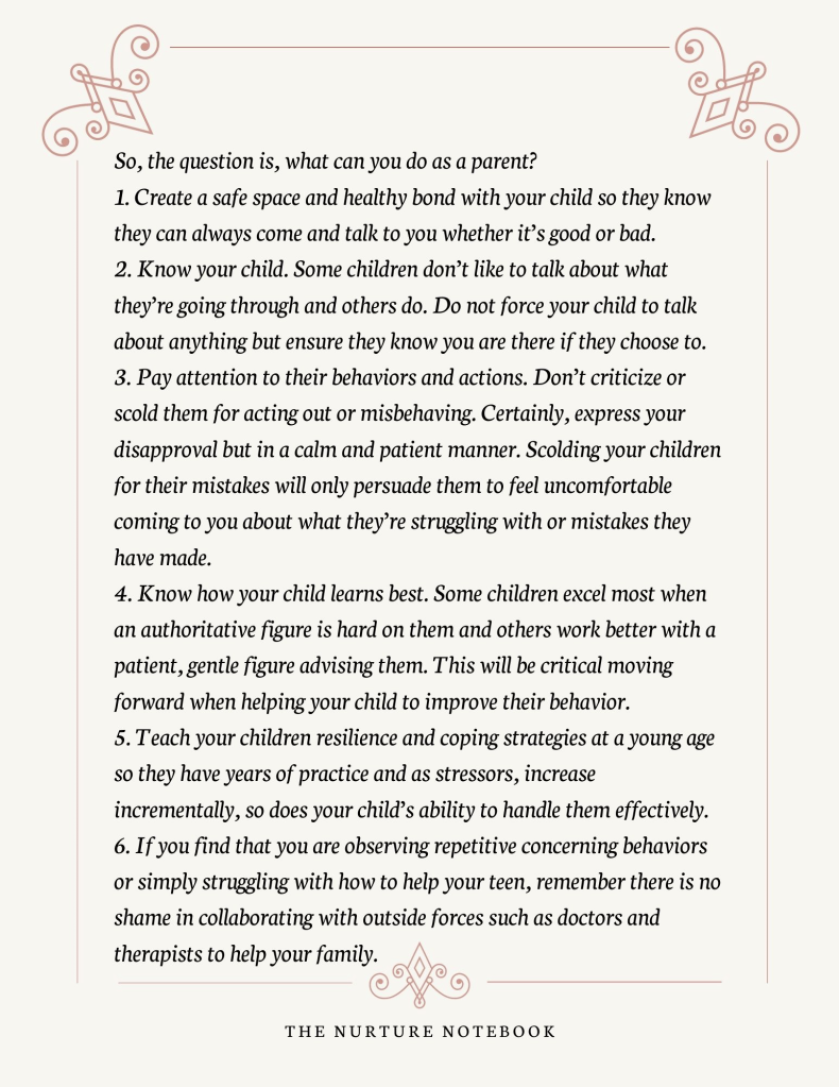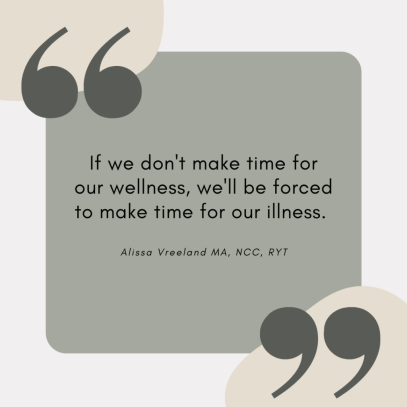
April is Stress Awareness Month, which makes it the perfect time to discuss some basics of stress, including how to cope with it considering it is inevitable in everyone’s life. Read on for causes, impacts, a brief introduction to the three part brain and how it relates to effectively coping with stress, exercises, and a parent letter written by our new teen author to help parents understand how to help their children through stressful times.
Stress is defined as a state of mental or emotional strain or tension resulting from adverse or very demanding circumstances (Oxford Dictionary). Stress affects everyone differently and every single person has been stressed before whether they knew it or not. For example, something that stresses out my teenager might be managing sports and school while still excelling in both. Whereas, what stresses me out might be the bills, getting my kids out the door, and getting to work on time. What causes stress for me may never have even crossed her mind because stressors depend on many factors, including lifestyle, environment, and age.

Common Stressors
3 PART BRAIN BASICS
REGULATE | RELATE | RATIONALIZE
As a parent and a pediatric specialist I really appreciated a continuing education class I took called Stress, Trauma, and Mindfulness Understanding Self-care for Healthcare Professionals by Nicole Steward, MSW, RYT, and how she related the development of the three-part brain to the stress management process. Let’s start by examining the three-part human brain model at a very basic level.
3 Part Brain Development
The primitive brain (brainstem and cerebellum) develops first and regulates your life essentials (such as breathing, heart rate, temperature, rest).
Next, your limbic brain develops and is responsible for your ability to relate to others, often being called the emotional brain. Some organs that reside here are the amygdala, hippocampus, and hypothalamus. Your limbic brain holds memories, learns, builds relationships, regulates your emotions, and unconsciously impacts your behavior. Your limbic system plays a critical role in the healing process of stress and trauma.
| Amy and Hippo’s Close Relationship Your hippocampus and amygdala have an intertwined relationship and play a critical role in your stress response. Your amygdala (Amy) controls your perception of emotions, your ability to respond to fear (fight/flight/freeze reactions), controls your impulses and aggression, and creates your memories. Your hippocampus (Hippo) navigates, stores, and recalls memories, and is involved in your spatial memory and the proprioceptive sense. When functioning properly they work synchronously together, like two best friends who finish each other’s sentences. |
Lastly, your cognitive brain (your neocortex, the front, “squiggly” lines over the top of your brain) helps you to think rationally. Judgment, logic, hindsight/insight/foresight, development and the ability to comprehend language, and abstract thinking all occur here.
*Note in the video the picture of the brain does not represent each exact brain structure. They represent the basic location.
There are a lot of interactions and connections within your body between organs and hormones involved in stress. If you are interested in all the intricacies, there is an abundance of information online for you. For the purpose of our blog, we are only providing a brief overview of the three-part brain because of how it specifically relates to the management of stress. But before we discuss management, let’s briefly discuss the physical and mental effects of stress on our bodies.
Physical & Mental Impacts of Stress
The connections and interactions between your organs and stress hormones (such as adrenaline, noradrenaline, and cortisol) are working overtime throughout your body to help you react and cope with stressors.
| Dear Parent, it is important to realize that stress impacts learning and memory. Think about when you’ve had a brain freeze and are unable to remember what you were going to say. That is because there is so much stress going on in your brain that your brain takes a temporary break. |
Stress Prevention
Consider the 6 Domains of Self-care.

It is impossible to prevent stress. We cannot control sudden stressors that may pop up at any time. But here are some quick tips about how to prepare your body to best handle stressors that do come up.
- Eat well-balanced meals. Unhealthy foods cause internal stress so if you attempt to eat healthy, sustainable foods high in protein your body will be prepared for the day, you’ll feel good, and will be more prepared when stressors intrude.
- Exercise to release endorphins that make you feel good. That’s why after you run for a good amount of time you get what’s called a “runner’s high.”
- Spend time with family or friends to take your mind off the stressful things or events in your life, relax, and feel connected to others.
- Plan out your schedule to help you to be more organized and prepared.
- Schedule in alone time to allow you to either start out your day focused or regroup in the middle of the day. Oftentimes people use this time to connect with their spiritual side.
Managing Stress
Now that you understand some stress basics it’s time to revisit the three-brain model. Deescalating stress requires the same sequential pattern as the development of the three-part brain. Once a stressor has entered your world, you actually need to process through the exact same sequence of the development of the three-part brain to efficiently deescalate the stressor.
Stress Management Sequence
First, address your primitive brain.
(REGULATE)
Are your essentials being met/regulated? Did you get enough sleep? Are you hungry? Are you thirsty? How is your breathing? All of these things need to be managed before your limbic system is able to step in and help you to recover from stress.
Second, engage your limbic system.
(RELATE)
Are you feeling connected? Do you have the resources and support in relationships to feel fulfilled? All of these areas are considered stress buffers.
Lastly, you will be able to think through things clearly.
(RATIONALIZE)
Now you can move forward because you got enough sleep and you feel connected.
The 3 IT’S Exercise Sequence
Taking in all the information above, Nicole Steward discusses in her course the following sequence to effectively treat toxic stress.
Notice It. Start with check-in’s throughout the day on your Internal Weather Pattern Report, in other words, notice and acknowledge how your mind and body feel. Ask yourself, what are my thoughts? How does my body feel? Am I tense? Am I tired? Am I hungry? Do I feel connected to others?
Name it. By naming our emotions we diffuse the control they have over us and the burden they place on us.

Move it. Bringing awareness to your mind and body and naming your emotions enables you to more efficiently progress forward with moving your body, which does almost the opposite of what the stress is actually doing in your body and brain. Hormones (norepinephrine, serotonin, and dopamine) will be released increasing your heart rate, motivation, attention, mood, focus, learning, and memory.

A summary of the IT’s.
Notice It | Name It | Move It
3 Movement and Breath Exercises
Take 5
Starting at your thumb trace up (inhale) for a count of five, pause at the top (hold your breath) for a count of 5, trace down the other side of your thumb (exhale) for a count of five.
Elevator Breath
Raise your shoulders up while inhaling for a count of five. Hold for a count of five and then exhale/release.
Finger Tap Breath
Quick note from Nurture Notetaker Kim Bandi, OTR/L. One of the schools I worked in adopted a mindfulness program to support their students and decrease their stress levels. I truly appreciated the time the school invested into teaching their staff and caring for their student’s well-being. I carried over their mindset into my occupational therapy sessions and incorporated this motor activity to promote mindfulness while still working on motor skills.
While touching your thumb to your pointer finger, making a circle, take a deep breath in for a count of five. Hold your breath for a count of five. Exhale for a count of five. Repeat this same sequence for each finger (middle finger to thumb, ring finger to thumb, and pinky finger to thumb) and if you have time repeat the sequence from your pinky back to your pointer.
3 Quick Children’s Resources
- Cosmic Kids Yoga
Teaching breathing and movement activities to younger children helps to give them a head start on relaxation techniques.
https://www.youtube.com/channel/UC5uIZ2KOZZeQDQo_Gsi_qbQ/videos
2. Alphabreaths: The ABC’s of Mindful Breathing by Christopher Willard and Daniel Rectschaffen
Educate your children on different types of mindful breathing in fun ways with this interactive book. The beautiful illustrations are also intriguing to children. We really like these two videos that provide you with insight into the book you are purchasing. The first video show you how to teach your child some of the different breathing patterns when you are reading the book with them. While the other is a read aloud.
3. Peaceful Piggy Meditation by Karry Lee MacLean
We enjoy this simple shorter book for children to teach the importance of mindfulness. But who doesn’t love books that use cute piggies to teach kids!
https://www.youtube.com/watch?v=b4R_-QmijN8
An Extra bonus book, Starbright Meditations for Children by Maureen Garth, is a nice book to read to children struggling with falling asleep due to stress.
Joining us at THE NURTURE NOTEBOOK is a talented teen author who has teamed together with us due to her interest in both the medical field, and in helping to provide parents with a perspective through a teen’s eyes. Whatever age your child is we encourage you to read this letter she has written to help parents understand some of the stressors that may occur in their child’s lives now or in the future, and how to support them.



As we wrap up this blog there are a couple important aspects of childhood stressors to keep in mind.
If you or your child are struggling to cope with personal stressors seek professional help for further assistance.
| There is absolutely no shame in asking for help, in fact, it’s a strength. Having the courage to ask for professional help for you or your child is commendable. |
We also feel that it is important to note that there are some life stressors, such as trauma, that make it necessary to seek out professional help. Finding the most suited professional to address your or your child’s trauma is important (for example the most suited therapist may be one who is trained in Trauma-Focused Cognitive Behavioral Therapy). This blog is not about trauma, however being this is also Sexual Assault Awareness Month and children are often victims of this horrific crime, professional help should always be sought in this type of situation. We also want to touch on another fact that parents are likely less aware of and that is child-on-child sexual abuse. We often immediately think of adults hurting children; however, older children and teens sadly do sexually abuse younger children. It is real, and it is more common than you may know. This is not mentioned to stress you out. It is simply meant to educate you and support both Stress Awareness Month and Sexual Abuse Awareness Month. Defending innocence.org lists five facts that you may not have been aware of.

Wow, that was a lot of information thrown your way but we hope that you have learned some stress basics that you can incorporate into both your daily life as well as your child’s. We would love to hear from you and what techniques work best for you.
In closing, take a moment to read this quote by Alissa Vreeland MA, NCC, RYT and remember investing in your wellness is much more fun and rewarding so set aside time for yourself.

Love,
Your Nurture Notetakers
Kim Bandi, OTR/L
Ava (15-year old Teen Author)